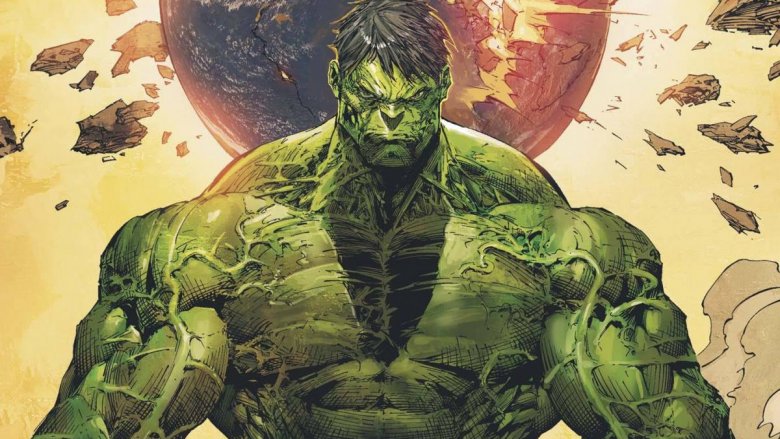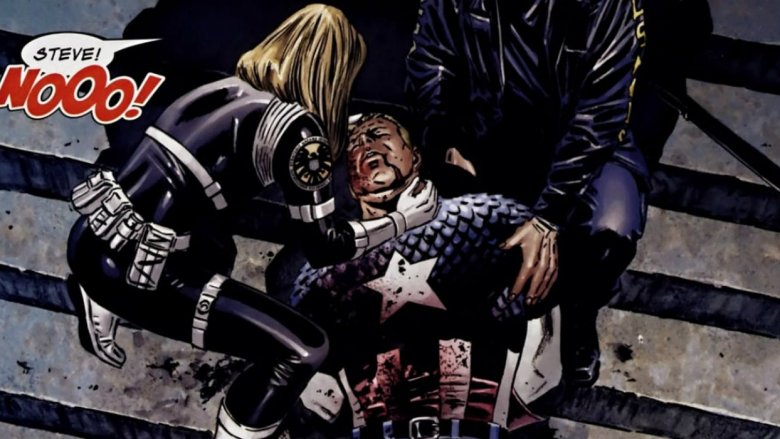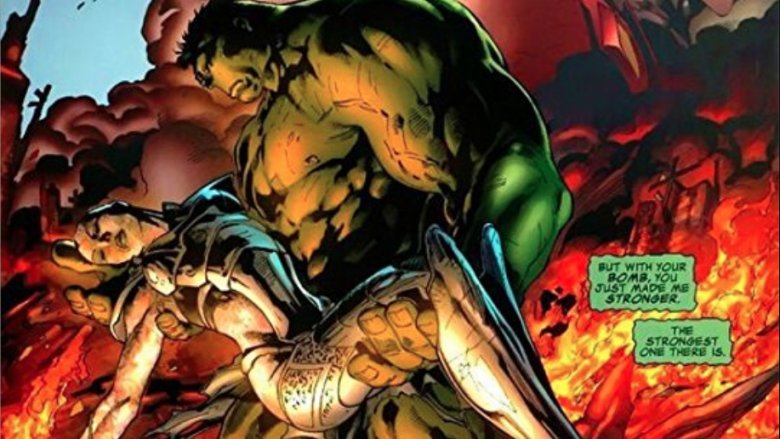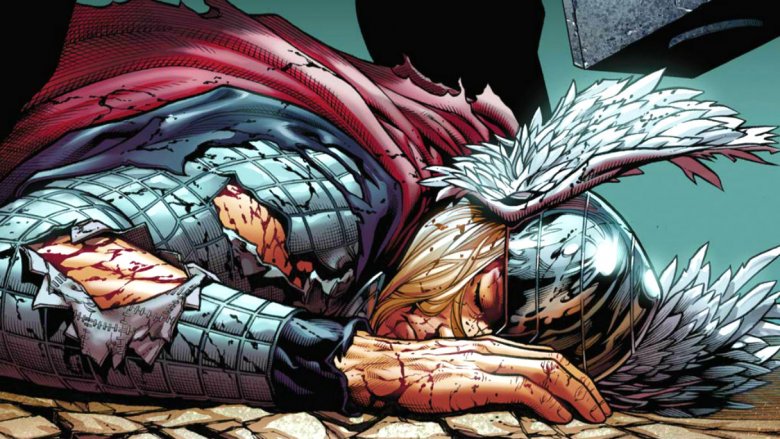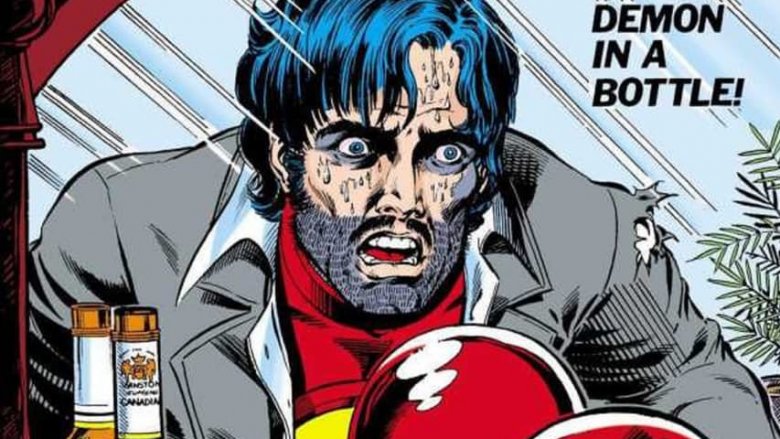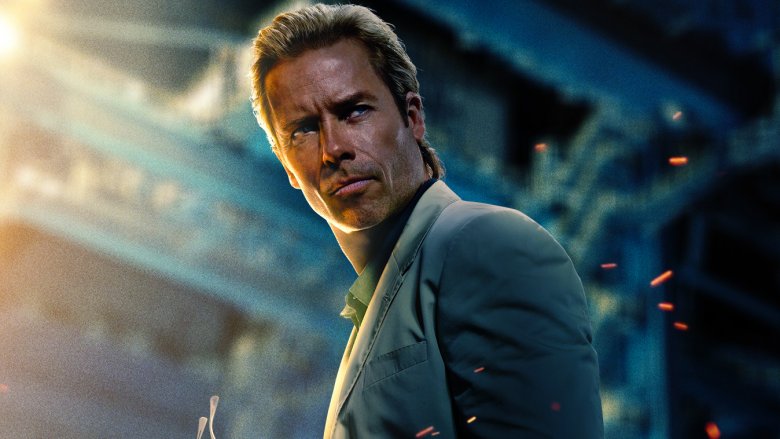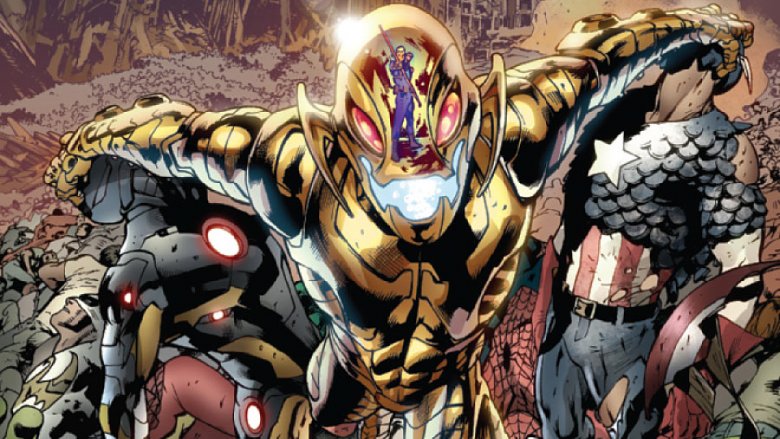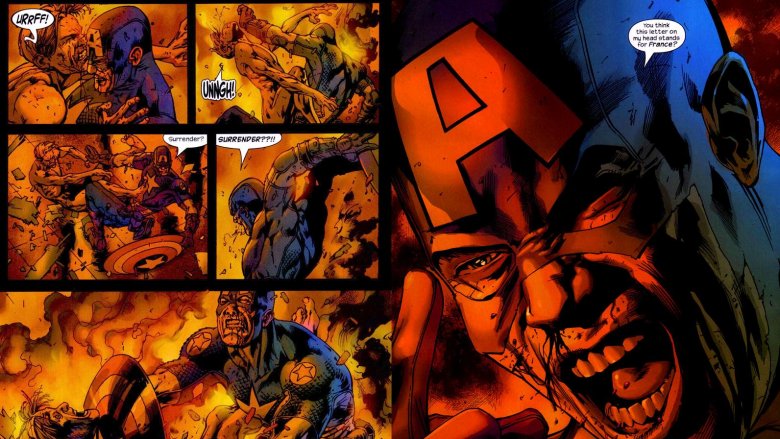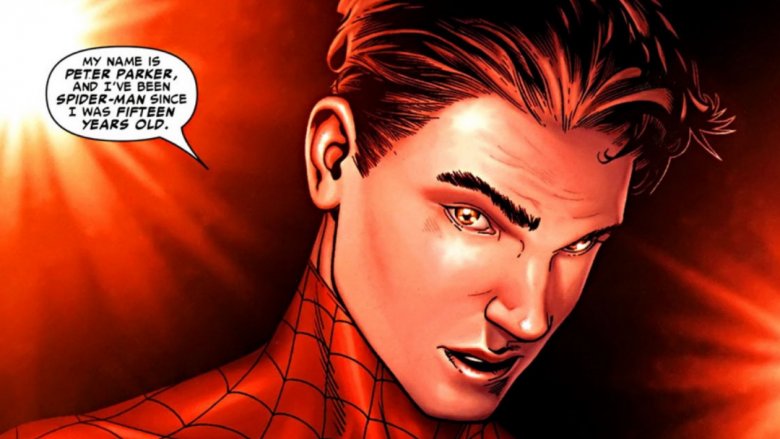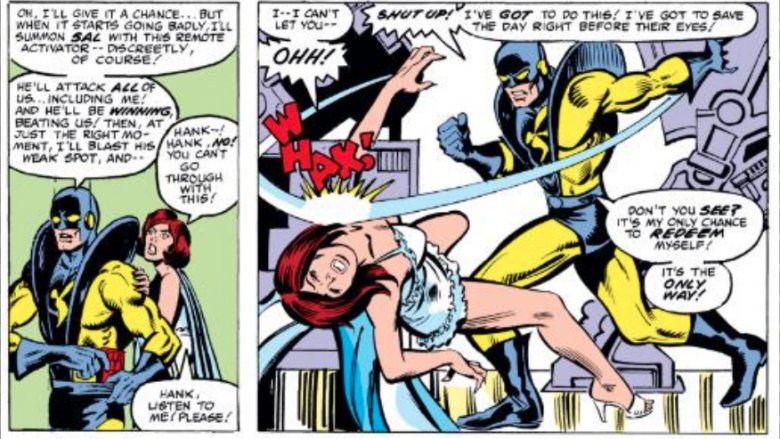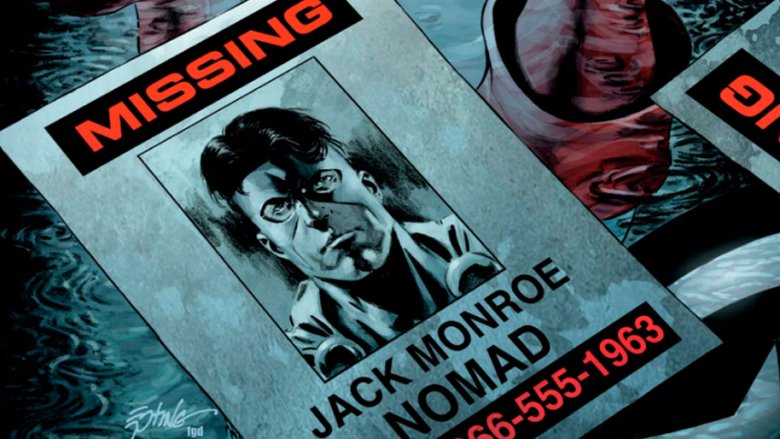Dark Plot Points Cut From Marvel Movies
Marvel Studios has taken a niche world of characters and stories and managed to craft them into a cinematic universe that is, if box office records are any indication, universally appealing. It's a pretty incredible accomplishment. That being said, in order to make some of their comic book stories more palatable to a wider audience, some major moments haven't made it to the screen. As any longtime reader could tell you, this is understandable—Marvel Comics can, after all, go to some pretty dark places.
The death of Captain America - Civil War
It might seem strange to adapt a major comic book story and not include its single most notable event, but that's what Marvel did with Captain America: Civil War. In the crossover comics arc that inspired the movie, the most infamous outcome of the story is the death of Captain America, who is shot outside the courtroom where he's set to be tried for his crimes in the superhuman civil war.
But by the end of Captain America: Civil War, Steve Rogers is very much alive. The death Marvel depicts in this version of the story is much more symbolic than literal. Cap hangs up the shield and strips himself of the mantle of Captain America. He's just Steve Rogers now, a political refugee taking shelter with his friends in Wakanda. Admittedly, Marvel's motivation for not killing him may have skewed more towards needing Cap around for that other war they have brewing, but still—the darkest moment from Civil War has yet to be seen on film.
Hulk loses everything - Planet Hulk
Hulk's return in Thor: Ragnarok is triumphant. Having developed his fighting skills as a gladiator (and his comedic chops), the big green guy stole the show in the third Thor film. His appearance drew from the Planet Hulk storyline, though admittedly they left a few of the less-jubilant details out.
Planet Hulk plays out like a big green Greek tragedy. Hulk's exile is entirely involuntary. He's lured onto a ship by the Illuminati (comprised of Marvel Universe masterminds like Professor X, Tony Stark, and Mr. Fantastic) and launched into space, with the vessel programmed to take him to a peaceful deserted planet. Instead, he ends up in a wormhole that takes him to Sakaar, a brutal world where gladiator slaves are forced to fight to the death. He ends up rising through the ranks as a gladiator and then stages a rebellion, soon becoming the de facto benevolent ruler of the planet alongside a surrogate family and the woman he loves (and is carrying his child). But the spaceship that took him to Sakaar explodes and kills his wife and his city, sending Hulk on a brutal path of revenge back to Earth.
Given Ragnarok's tone, it makes sense that none of this made it to the screen. It's a pretty dark story to adapt to the MCU to begin with. The franchise has never shied away from somber moments, but Planet Hulk may have been too much of a downer overall to adapt properly.
Thor dies - Thor: Ragnarok
Don't let the ominous title fool you. Thor: Ragnarok is pretty decidedly non-apocalyptic in tone. Despite depicting the destruction of Asgard, the film is pretty comedic. Characters are cracking jokes literally seconds after Asgard is vaporized. Given this, it seems understandable that Marvel would skirt away from letting the true horrors of Ragnarok play out—like the part where Thor dies.
In the comics (which take place alongside the event Avengers: Disassembled), Ragnarok is triggered by Loki, and the reunion between the two brothers is a bit less amicable because of this. Asgardians war against each other and pretty much everyone dies, including Odin, Loki, and, yes, Thor. There's no spaceship of Asgardian refugees and no hope for the future of Asgard. All of the nine realms short of Midgard (Earth) are destroyed, and everybody dies. It obviously works out better for the MCU if Thor's alive for Infinity War, so director Taika Waititi was free to draw on the arc for inspiration while tinkering with some of the details.
Tony Stark's alcoholism - Iron Man trilogy
Before Robert Downey Jr. turned him into a cornerstone of the MCU, Tony Stark was perhaps best known among Marvel fans for the darker side of his playboy lifestyle, which manifested itself in the form of alcoholism. Most famously tackled in the Demon in a Bottle story, Stark has fought this inner battle harder than any villain—his greatest adversary has never been the Mandarin, the Iron Monger, or the Grey Ghost. It's been his own addiction.
Unfortunately, we haven't seen this in the MCU. It's always been a sort of background detail, something alluded to through small visual cues or repetition (we do, in fact, see Tony drinking pretty frequently throughout the films). And it's not completely unacknowledged. It comes up a bit in Iron Man 2, though his drunken boorishness in that film is more tied to his knowledge of his impending death via poisoning by his arc reactor. And his alcoholism is retooled to an addiction to the Iron Man suit itself in Shane Black's Iron Man 3. Fans anticipated that Tony's fondness of the bottle would eventually make it to the big screen in a major way, but it seems unlikely at this point.
Aldrich Killian's suicide - Iron Man 3
Iron Man 3 is actually a loose adaptation of Warren Ellis and Add Granov's acclaimed Iron Man run Extremis, which served as both a retooling of Tony Stark's origins and a launching pad into a bold new direction. Said bold new direction is anchored in the concept of Extremis, a new bleeding edge technology that Stark used to integrate the Iron Man armor into his very biological structure, meaning he carried it with him at all times.
Present in Extremis is Aldrich Killian (played with villainous delight by Guy Pearce in Iron Man 3), though his role is slightly different in the comics, where his introduction also marks the moment he kills himself. Killian is the man responsible for stealing and releasing the Extremis virus in the comics, and the guilt drives him to suicide. It's a very dour note, and it's not surprising that it wasn't used in the film, which takes a far more lighthearted and comedic tone to its retelling.
Ultron wins - Avengers: Age of Ultron
Admittedly, Avengers: Age of Ultron borrows very little from the comics event from which it takes its name. But that's kind of telling in and of itself, as the comic is a bit nihilistic, to say the very least. In Brian Michael Bendis and Brian Hitch's Age of Ultron arc, Ultron has won, plain and simple. Humanity has been effectively wiped out and he rules over the planet with an iron (or whatever Ultron is made out of) fist. Heroes are dead and there's no end in sight, until a plan to travel back in time and kill Hank Pym, creator of Ultron, is hatched. And to be clear, this is how the book opens.
Obviously the plot is pretty grim, which may be part of why Marvel decided not to adapt the story to film and instead just borrowed the title. Considering the reception the book received, we can't blame them.
Ultimate Cap is a bully - The Avengers
One of the stronger points of the Marvel Cinematic Universe has been the way it drew from the concept of the Ultimates when it came time to assemble the Avengers onscreen for the first time. The way the Ultimate Universe reimagined the origins of the Marvel Universe in a modern context largely influenced the way the studio brought the characters to life in the 21st century, from Hawkeye's outfit to the Triskelion. Fortunately, they've shied away from Chris Evan's Captain America being an adaptation of the nationalist bully we meet in the form of Ultimate Captain America.
Ultimate Cap is far from the warm-hearted Steve Rogers we meet in the Marvel Cinematic Universe. He's blindly patriotic, hardheaded, and prone to snide comments about other nations. The Cap of the Ultimate Universe is no role model—he's very much what you'd expect if you took a white guy from the 1940s and dropped him in the middle of modern times with no time to adjust his way of thinking. Marvel's decision to make Steve Rogers the heart of the MCU and not its strong arm has proven pretty wise in that respect.
Spider-Man unmasks and Aunt May gets shot - Captain America: Civil War
The death of Captain America wasn't the only infamous consequence spinning out of Civil War. While it doesn't quite eclipse Cap dying, the series depicts another majorly significant moment in the history of the Marvel Universe: Peter Parker revealing himself as Spider-Man at a press conference, exposing his true identity to the world. Peter's unmasking was done as a display of his support of the Superhero Registration Act and was largely encouraged by Iron Man. The results were catastrophic: going public led to Aunt May getting shot by an assassin the Kingpin hired and Peter fleeing, breaking away from Iron Man's team and joining the resistance led by Captain America against the Registration Act.
Given that they were introducing the character for the first time and making him a high school student, it makes sense that Marvel didn't take Spidey on this darker journey in Civil War. His getting involved in the conflict and siding with Iron Man draws from the comics well enough without depicting one of its grimmer moments.
Hank Pym is the worst - Ant-Man
Ant-Man sees the introduction of one of the core members of the Marvel Universe in the form of Michael Douglas's Hank Pym. While Douglas portrays Pym as a flawed, imperfect man with a multitude of anger issues, his depiction never reaches the horrible depths to which the character has sunk in the comics.
There's one thing Hank Pym is more famous—or infamous—for than his time as Ant-Man and/or Yellowjacket or creating Ultron. The most notable thing Pym's done in a Marvel comic is abuse his wife Janet, the Wasp. It's a horrifying moment, one that's defined the character for decades since. Many fans have found it irredeemable and hold it against him to this day. While some of the anger the character is now so well known for is certainly present in Michael Douglas' performance, Marvel understandably shied away from portraying it in Ant-Man.
The lonesome death of Jack Monroe - Captain America: The Winter Soldier
Captain America: The Winter Soldier draws heavily from the first 12 issues of Ed Brubaker and Steve Epting's run on the Star Spangled Avenger's comic book. The plot of Bucky Barnes' resurfacing decades after his apparent death as a Cold War assassin made for one of the most acclaimed Marvel films to date. The storyline is already dark, so it makes sense that one of the grimmer moments depicted in the comics didn't make the cut.
The seventh issue in the arc, a story titled The Lonesome Death of Jack Monroe, catches the reader up on one of the more complicated characters in Cap's history: Jack Monroe, better known as the superhero Nomad and slightly less known as a Bucky Barnes imposter (it's complicated, guys). The issue depicts Monroe finding out that the super-soldier serum he was injected with years ago is slowly killing him. It slowly drives him mad and leads to him beating up a bunch of civilians he believes to be drug dealers. In the end, it's not his illness that kills him, but a bullet from the real Bucky Barnes, now the titular Winter Soldier.
The Lonesome Death of Jack Monroe is a devastating story about a man who desperately wants to be a hero but hasn't been dealt the hand in life to make that possible. As a comic, it's excellent. As a Marvel Cinematic Universe story, it probably wouldn't have gone over nearly as well due to its content and tone.
